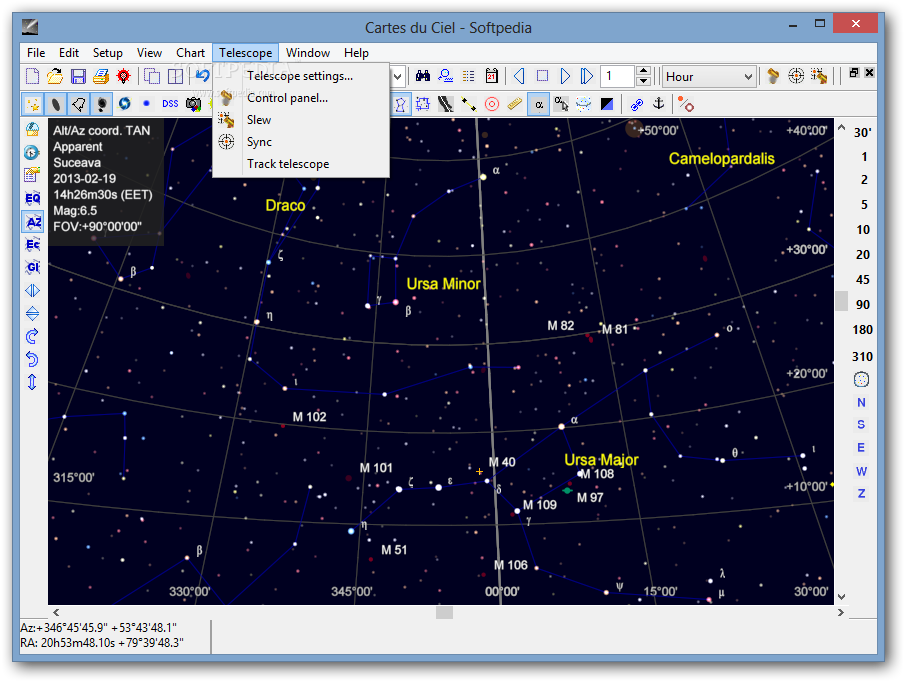

Or anyone who knows that if there is some app like this and I can try to path it with FWHM code?Īnother news is that ZWO itself will release a capture app on Win/Mac/Linux, but I don't think I can see it in next year. I'm still thinking about this and, maybe finally I will try to make a CLI capture application based on INDI (like gphoto/pktriggercord) and calculate FWHM with the code from Siril. CCDCiel seems good but it does not provide any useful commands in its tcp/ip server. The best solution is to change OSI to an INDI enabled capture application. The key issue is the ccd part of iAH is based on OSI which provides the preview and FWHM/HFD data. I'm not familiar with OSI code so I could not tell if I can finish it.Ĭ seems to be easy but many users do not like the INDI page in iAH which is mass and difficult to use. And there is no live view/preview.ī is a huge work. Solution D: wait GoQoat to fix its INDI issue.Ī is easy to do but the autofocus will be lost because the FWHM/HFD data is from OSI. Solution C: modify INDI part to talk to lin_guider.
#SKYCHART 4.1 DOWNLOAD DRIVER#
Solution A: make a set of scripts to drive ASI driver directly, then the ASI camera will work like a DSLR in iAH with ASI filter and temperature control module. And the INDI part does not talk to guider part and filter part. The main problem of iAH is the ccd part is based on OSI and GoQoat. Now iAH does not support ASI camera natively. The following commands could be changed to lin_guider native commands:
#SKYCHART 4.1 DOWNLOAD PATCH#
This will let us to patch future lin_guider (5.x) easier. This could impact about 10 iAH files, and also make the Lin_guider patch smaller about 30% off. Several commands need to be changed to fit new Lin_guider commands. To make it work with iAH, the best way is to modify iAH scripts but not too much on lin_guider. In 4.2.0 there are many new commands added for Lin_guider server. Please give us feedback if you succeeded.Įdited by apos, 05 March 2018 - 12:25 PM.Īfter a busy year, I could spend time on iAstroHub work now. There are also other workarounds for this problem (udev rules) but I think this solutions should work and is easy to achieve.

#> 0 lrwxrwxrwx 1 root root 9 Mär 5 18:03 /dev/ttyUSB0 -> /dev/ttyACM0 etc/rc.local is run while the system boots. To make this permanent edit the file /etc/rc.local and put the above commands in it. #> 0 lrwxrwxrwx 1 root root 9 Mär 5 18:03 /dev/ttyUSB0 -> /dev/tty0 Now you can use /dev/ttyUSB0 and it automatically uses /dev/ttyACM0. Log into the raspberry via console (ssh) and enter the following commands: I think, this would be the easiest solution. If this really is the problem, you can symlink ttyUSB0 to ttyACM0 at the RaspberryPI. To me, this suggests the root of the problem. The C code does not reflect any updated path to any config file. Setting the USB port in the GUI has no effect. In fact, I imagine the same problem exists with SW6P. On Raspberry PI 3 model B, USB is labeled as /dev/ttyACM0. All Sk圜hart C programs are hardwired to /dev/ttyUSB0.
#SKYCHART 4.1 DOWNLOAD SERIAL#
I found the source for the Sk圜hart ERROR Open Serial Port.


 0 kommentar(er)
0 kommentar(er)
